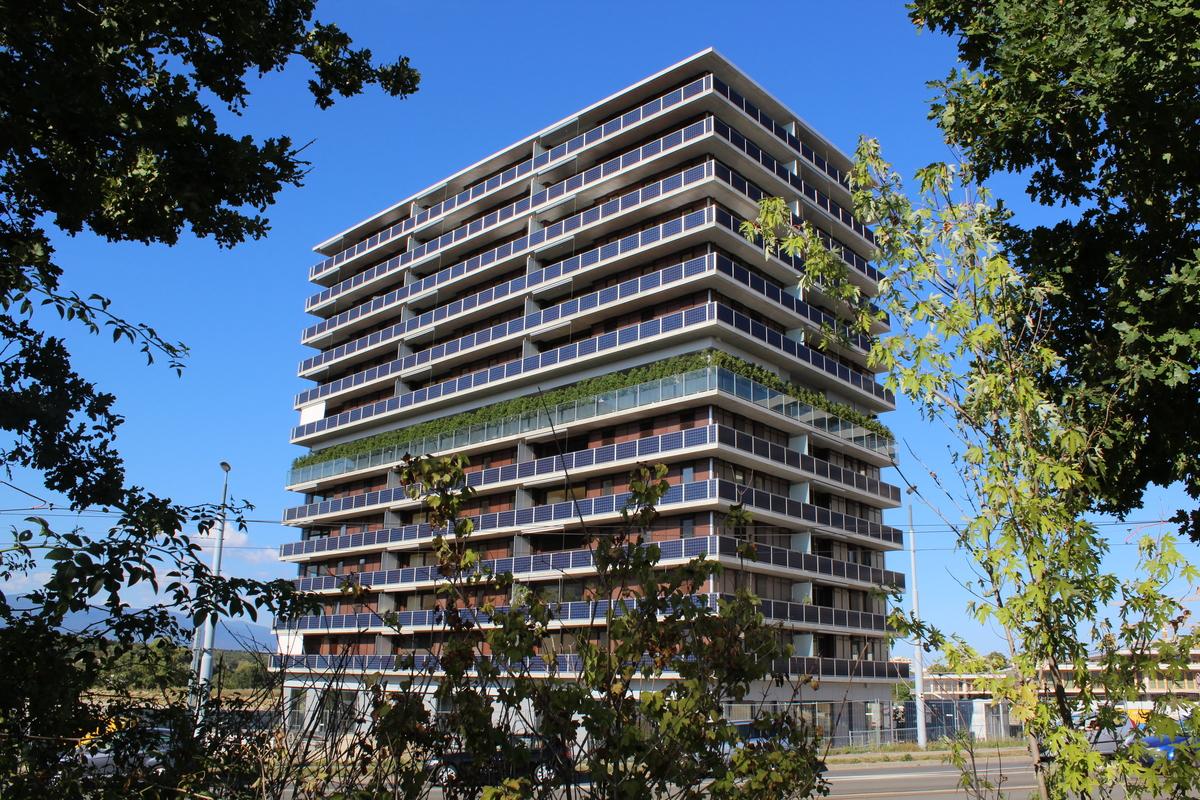January 11.2021

The Vergers Tower is a pioneer project that meets the Minergie-A standard. The C2 Tower is a 12-storey construction, comprising 104 residential properties above a commercial area on the ground floor. Photo credits: Groupe H.
The new report „BIPV installations: guidelines for the energy and economic evaluation“ commissioned by SwissEnergy, in which researchers from SUPSI’s Institute for Applied Sustainability to the Built Environment, CR Energie Sarl, Swissolar and Dr. Ruedi Meier (EnWi) were involved, is available online as of December 2020.
Over the last decade, Building Integrated Photovoltaic (BIPV) installations have been applied with increasing frequency in real examples and, in some cases, have proven to be an indispensable means to comply with the requirements of current energy legislation.
Today, BIPV solutions on the market offer a wide range of possibilities, making them highly customisable systems incorporating multifunctional technology for transforming the building envelope into a generator of clean, low-impact energy. Furthermore, for property owners, investors and architects, one of the key issues is to understand the profitability of investing in BIPV.
In this report is presented an analysis based on five solar architectures for which the economic viability was calculated. With the involvement of the Innovative Envelope team of SUPSI-ISAAC, new and refurbished Swiss residential and administrative buildings were analyzed. In Ticino was evaluated the deltaROSSO building by the architectural firm deltaZERO. The following are the main findings of the research:
- The architectural design of BIPV installation should always be assessed and coordinated from the early stages of the preliminary project feasibility studies.
- The initial investment required to integrate a photovoltaic installation into the building envelope (facade and roof) can be estimated to be 30-40% higher than the cost of a conventional envelope.
- In new buildings, however, optimally integrated solar installations can also be more cost-effective than equivalent non-photovoltaic building envelopes.
- Evaluating the flow of costs and benefits over the entire life cycle of the system, for new buildings, the typical profitability of BIPV systems, considering the revenues due to the sale and self-consumption of the energy produced, is about 8% of the invested capital.
- If an energy refurbishment is paired with the installation of a BIPV system, it can achieve a return on investment of around 1-3%.
- In existing buildings, integrated solar installations should always be implemented in combination with a passive energy retrofit of the building envelope and installations. These costs can be amortized by increasing the rental costs.




